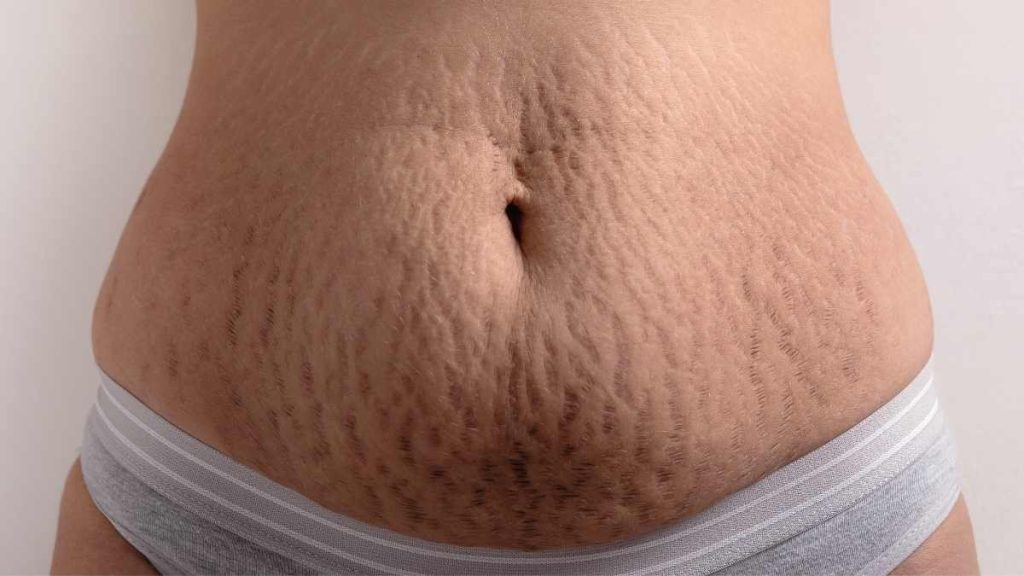Did you know that over 80% of people experience stretch marks, a common skin condition, at some point? Stretch mark treatment laser options are revolutionizing the way we handle these pesky skin issues for the patient, including surgical scars, with blue light therapy administered by a qualified ASDS dermatologist. This cutting-edge technology offers a non-invasive, effective solution to reduce the appearance of stretch marks through skin resurfacing treatment, ablative laser treatment, and light therapy for the patient. With minimal downtime and impressive results, it’s no wonder more patients are turning to laser treatments by a qualified ASDS dermatologist despite potential risks.
In this post, we’ll dive into how stretch mark treatment lasers work, their benefits, and what you can expect from the procedure with a qualified ASDS dermatologist for the patient. Whether you’re dealing with recent stretch marks or older ones, understanding your options like ablative laser treatment from an ASDS dermatologist can help you make an informed decision as a patient. Let’s explore the world of laser treatments for stretch marks with an asds dermatologist and discover how they can help you achieve smoother, clearer skin as a patient.
Understanding Stretch Marks
Definition
Stretch marks are scars. They form when the dermis tears due to rapid growth or weight gain, often treated by asds dermatologists using laser stretch mark treatments. These scars are known as striae.
Affects All Individuals
Stretch marks affect everyone. Age and gender do not matter. They commonly appear on:
-
Abdomen
-
Breasts
-
Hips
-
Flank
-
Buttocks
-
Thighs
These areas are prone to stretching.
Difficulty in Removal
Completely removing stretch marks is difficult. The skin’s structure changes permanently. Effective treatments are necessary.
Laser Therapy
Laser therapy helps treat stretch marks. This method uses focused light, such as laser stretch mark removal, to target the affected area, asds dermatologist. It stimulates collagen production.
Benefits of Laser Therapy
Laser therapy offers several benefits:
-
Reduces appearance of stretch marks
-
Improves skin texture
-
Minimizes skin pigmentation issues
Benefits of Laser Treatment
Collagen Production
Laser therapy promotes collagen production. Collagen is a protein that helps skin stay firm and smooth, asds dermatologist, often discussed during laser stretch mark removal. The laser penetrates the skin and stimulates collagen growth. This process improves the appearance of stretch marks.
New skin generation also occurs. The laser removes damaged skin layers. New, healthier skin replaces the old layers. Stretch marks become less visible as the skin regenerates.
Non-Invasive Nature
Laser treatment is non-invasive. Unlike surgery, there are no cuts or stitches. This makes it a safer option for many people.
Minimal downtime is another benefit. Patients can return to normal activities quickly. Most people only need a few days to recover from laser treatments, asds dermatologist.
Healing Response
Laser therapy boosts the healing response. The laser’s heat encourages blood flow to the treated area, asds dermatologist. Increased blood flow speeds up healing.
The immune system also benefits. Laser treatment can enhance overall skin health. Healthier skin looks better and feels smoother.
Safe and Effective
Laser stretch mark removal is safe and effective. Many patients see significant improvements after just a few sessions. Fractional laser therapy targets specific areas without damaging surrounding tissue.
Ablative laser treatments are one type of laser therapy used for stretch marks. They remove thin layers of skin, which promotes new skin growth.
Risks of Laser Therapy
Pain and Swelling
Laser therapy for stretch marks can cause pain. The laser’s heat may lead to discomfort during the procedure. Some patients report a burning sensation. Swelling often follows the treatment. This is a common side effect. It usually subsides in a few days.
Skin Discoloration
Skin discoloration is another potential risk. The laser can affect skin pigmentation. This may result in either hyperpigmentation or hypopigmentation. Hyperpigmentation causes dark spots. Hypopigmentation leads to lighter patches on the skin. These changes are sometimes temporary but can be permanent.
Scarring and Infection
Though rare, scarring is a possible risk. Improper use of the laser can damage deeper layers of the skin. This might cause scars to form. Infections can also occur if the treated area is not properly cared for after the procedure. Keeping the area clean is crucial to prevent this.
Qualified Dermatologist
Choosing a qualified dermatologist minimizes risks. A skilled professional ensures proper laser settings and technique. They assess your skin type and condition before treatment. This helps avoid complications. Always verify the credentials of your dermatologist.
Follow-up Treatments
Follow-up treatments are often necessary to maintain results. Each session carries its own risks, including repeated exposure to the laser. This can increase the likelihood of side effects like pain, swelling, and discoloration.
Choosing Laser Over Other Methods
Effectiveness
Laser therapy is more effective than creams and oils. Traditional methods like creams and oils often provide minimal results. Creams and oils can take months to show any change. Even then, the improvement is usually slight.
Laser treatments target deeper layers of the skin. They use laser light to stimulate collagen production. This helps regenerate the skin and improve texture. Clinical evidence supports these claims. Studies have shown that laser therapy can significantly reduce stretch marks.
Scientific Backing
Laser therapy has strong scientific backing. Dermatologists use different types of lasers for treatment. One common type is the dye laser. Dye lasers are known for their precision. They target specific areas without damaging surrounding tissue.
Research supports the effectiveness of laser treatments. A study published in the Journal of Dermatology found that laser therapy improved skin texture by up to 60%. The treatments help by breaking down scar tissue and promoting new skin growth.
Cost-Effectiveness
Laser treatments are cost-effective in the long run. Topical products like creams and oils need continuous use. This can add up over time. Many people spend hundreds of dollars on products with little to no benefit.
Laser procedures may seem expensive initially. However, they offer lasting results with fewer sessions needed. Most people see significant improvement after just a few treatments. This makes laser therapy a better investment compared to ongoing purchases of topical products.
Professional Guidance
Dermatologists recommend laser therapy for stretch marks. Experts in dermatology understand skin conditions well. They can tailor treatments to individual needs. This ensures better outcomes and minimizes risks.
By choosing professional guidance, patients get personalized care. Dermatologists can also monitor progress and adjust treatments as needed.
Innovative Laser Techniques Explained
Fractional Laser Therapy
Fractional laser therapy is a recent advancement. This technique targets smaller areas of skin. It creates micro-injuries to stimulate healing. This method allows for quicker recovery.
Cosmetic surgery specialists often recommend this treatment. It is effective for reducing stretch marks. The precision of fractional lasers ensures that only affected areas are treated.

Light Wavelengths
Different wavelengths of light are used in laser treatments. Each wavelength penetrates different layers of the skin. For example, shorter wavelengths reach the surface. Longer wavelengths go deeper.
This variety optimizes the healing process. It allows for better targeting of stretch marks. Specialists select the right wavelength based on the patient’s needs.
Personalized Care
Laser treatments can be customized. Specialists consider individual skin types. They also look at the condition of the stretch marks.
Personalized care ensures better results. Different skin types react differently to lasers. Customization minimizes risks and improves outcomes.
Benefits and Risks
Laser technology offers many benefits. It is non-invasive and precise. Recovery times are shorter compared to other methods.
However, there are risks involved. Some patients may experience redness or swelling. It’s important to consult a specialist before undergoing treatment.
Preparing for Your Session
Consultation
Consult an ASDS dermatologist before your session. A thorough medical history review is essential. The dermatologist will perform a physical exam to ensure you are a suitable candidate for the procedure. This step helps identify any underlying conditions that might affect the treatment.
Avoid Sun Exposure
Avoid sun exposure before your laser treatment. Sunburned or tanned skin can react poorly to the laser. It can lead to complications like hyperpigmentation or burns. Use sunscreen with high SPF if you must be outdoors.
Medication Check
Certain medications increase skin sensitivity to lasers. Inform your dermatologist about all medications you are taking. This includes over-the-counter drugs and supplements. Your doctor may advise stopping some medications temporarily.
Skin Preparation
Prepare your skin as advised by your dermatologist. They might recommend specific lotions or treatments. These products can help optimize the results of the laser treatment. Follow their instructions carefully for the best outcome.
Hydration and Diet
Stay hydrated before your session. Drink plenty of water in the days leading up to the procedure. A well-hydrated body can heal faster and better withstand the laser treatment.
Post-Treatment Expectations
Initial Reactions
Patients may notice immediate effects after the laser treatment. Skin can appear pink or red. Some experience mild swelling. The treated area might sting, similar to a sunburn. These reactions are normal and temporary.
Healing Time
Significant changes might not be visible right away. It takes time for the skin to heal and regenerate. Expect to see improvements several weeks post-treatment. Patience is key during this period.
Post-Care Instructions
Following post-care instructions is crucial for optimal results. Avoid applying makeup on the treated area initially. This prevents irritation and supports healing. Moisturize regularly to keep the skin hydrated.
Sun Protection
Protecting your skin from the sun is essential. Use a broad-spectrum sunscreen with at least SPF 30. This helps prevent further damage and supports the healing process.
Follow-Up Sessions
Multiple sessions might be necessary for desired results. Discuss with your dermatologist about follow-up treatments. They will guide you on the best schedule based on your progress.
Managing Pain and Side Effects
Pain Relief
Patients often experience discomfort after stretch mark laser treatment. Cool compresses can help reduce pain and swelling. Over-the-counter pain relief, like ibuprofen or acetaminophen, may also be beneficial. Always follow the dosage instructions provided on the medication.
Monitoring for Infection
It’s crucial to monitor the treated area for any signs of infection. Look for redness, swelling, or pus. If these symptoms appear, contact a dermatologist immediately. Early intervention can prevent complications.
Follow-Up Care
Adhering to follow-up care instructions is essential. This includes keeping the treated area clean and moisturized. Avoid exposing the skin to direct sunlight. Use sunscreen with a high SPF if you need to go outside.
Reducing Side Effects
Side effects like redness and swelling are common but usually temporary. To minimize these, avoid strenuous activities for a few days post-treatment. Hydration also plays a key role in healing.
Contacting Your Dermatologist
If unusual side effects occur, such as severe pain or blistering, reach out to your dermatologist promptly. They can provide guidance and additional treatment if necessary.
Summary
Laser treatment for stretch marks offers a promising solution with its advanced technology and effective results. By understanding the benefits, risks, and preparation involved, you can make an informed decision about this innovative approach. Laser therapy stands out due to its precision and ability to target affected areas, making it a preferred choice over traditional methods.
Ready to take the next step? Consult with a qualified dermatologist to explore your options and start your journey toward smoother skin. Don’t let stretch marks hold you back—embrace the confidence that comes with clear, beautiful skin today.
Frequently Asked Questions
What are stretch marks?
Stretch marks are scars that appear when the skin stretches or shrinks quickly. This sudden change causes the collagen and elastin in the skin to rupture.
How does laser treatment help with stretch marks?
Laser treatment stimulates collagen production and resurfaces the skin. This reduces the appearance of stretch marks, making them less noticeable.
Are there risks associated with laser therapy for stretch marks?
Yes, risks include redness, swelling, and temporary discomfort. Rarely, it may cause scarring or changes in skin pigmentation.
Why choose laser treatment over other methods?
Laser treatment is non-invasive and effective. It offers quicker results compared to creams and lotions, providing significant improvement in a few sessions.
What innovative laser techniques are available?
Fractional lasers and pulsed dye lasers are popular. They target deeper skin layers and improve texture without damaging the surface.
How should I prepare for a laser session?
Avoid sun exposure and tanning products before your session. Cleanse your skin thoroughly on the day of treatment.
What can I expect after laser treatment?
Expect some redness and swelling post-treatment. These effects usually subside within a few days. Follow aftercare instructions for best results.





